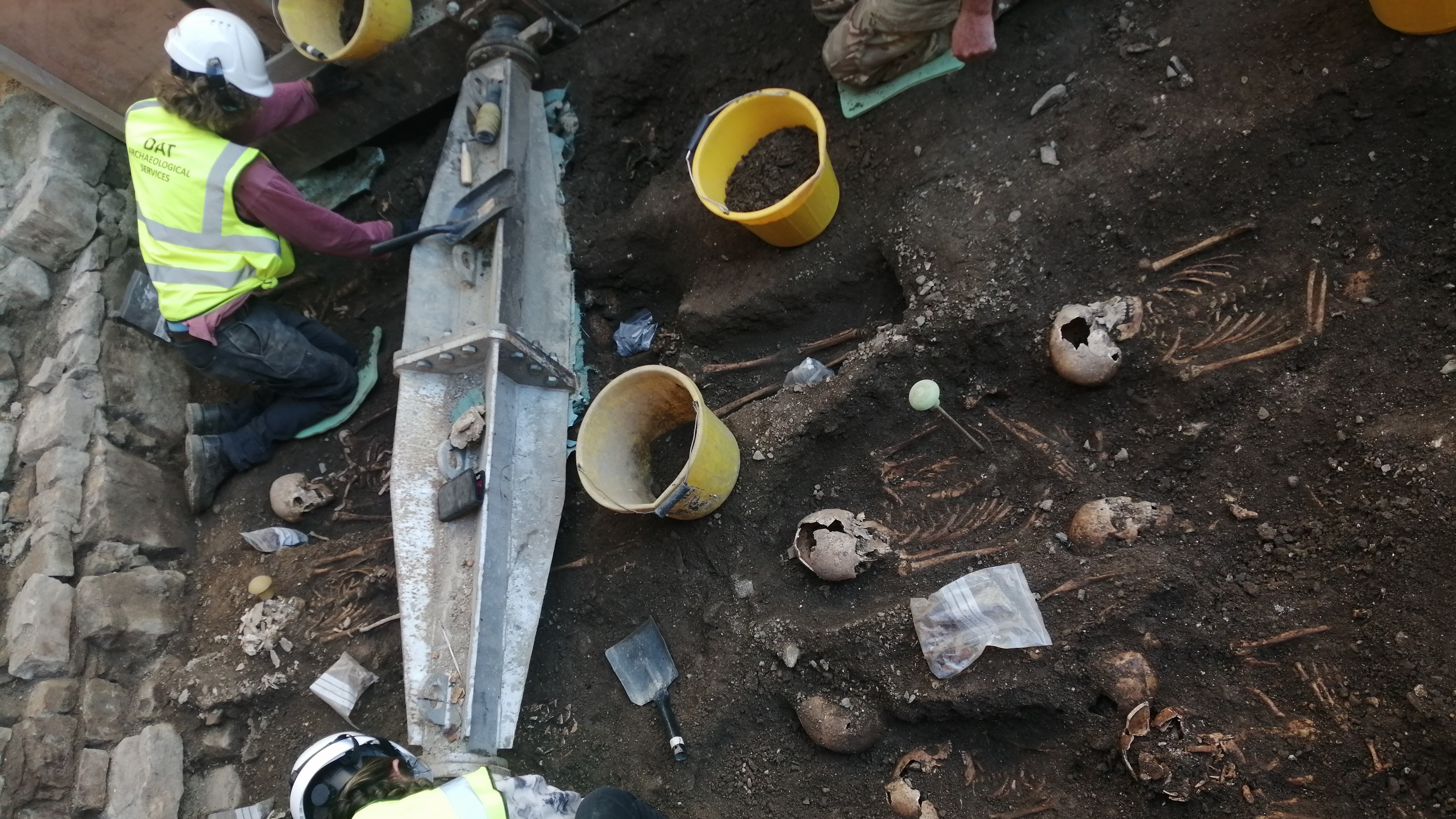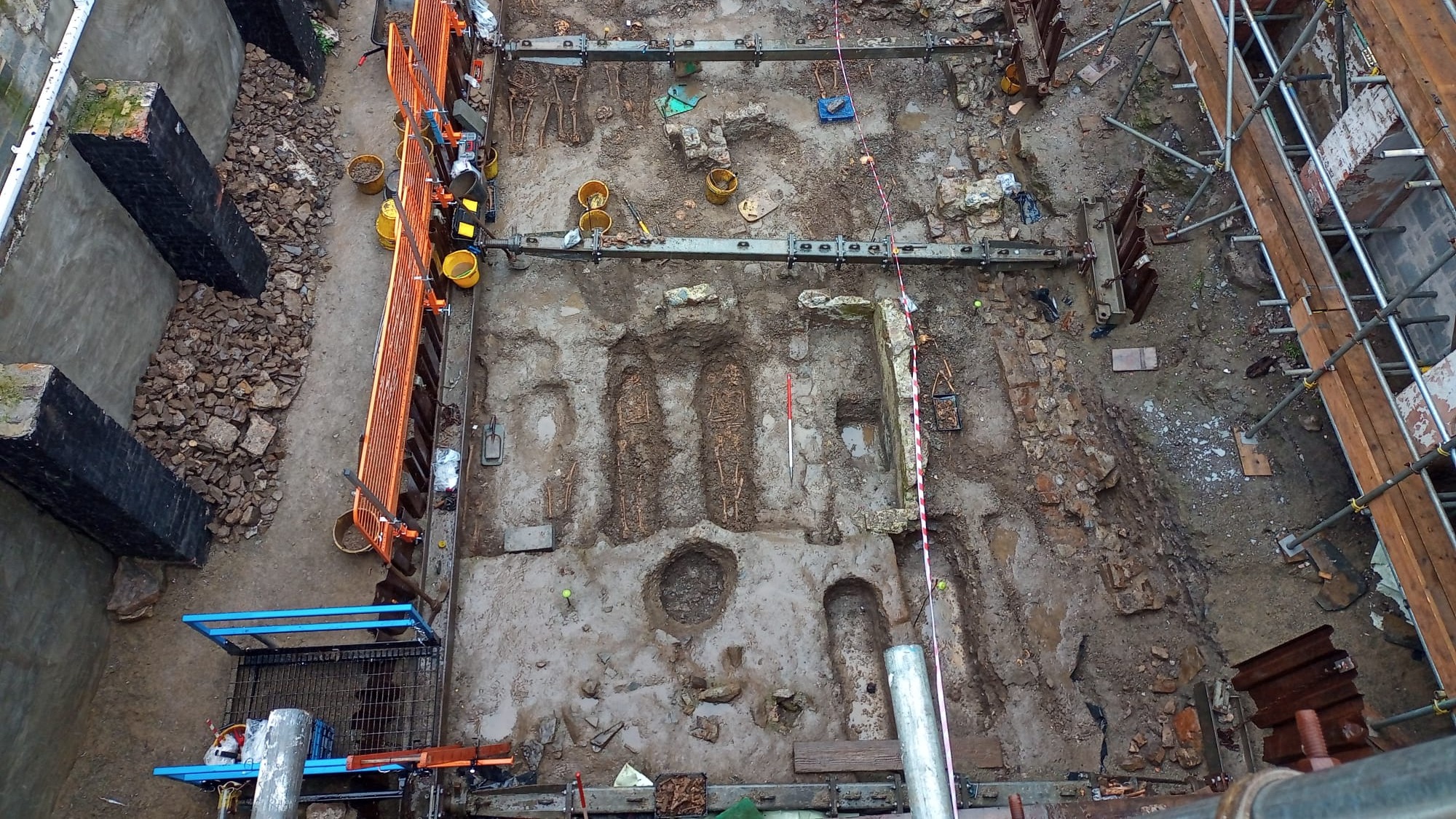Hundreds of medieval skeletons, half of them children, discovered under Wales department store
More than 240 skeletons have been unearthed from a former medieval friary cemetery, revealing a "snapshot of the community."

Archaeologists in Wales have unearthed the skeletal remains of more than 240 people — about half of which were children — in a cemetery that they believe was once part of a medieval friary.
Scientists made the discovery during an ongoing excavation of what was once St. Saviour's Priory, a holy site founded in 1256 by a Dominican order of monks. (Earlier this year, archeologists from the same team uncovered 17 skeletons in a different section of the site, which is located in Haverfordwest, a town in the southwestern Welsh county of Pembrokeshire.)
While the cemetery is thought to be associated with the friary, it wasn't uncommon for members of the surrounding community to be buried there for a small fee.
"It was considered the town cemetery," Fran Murphy, the head of archaeological services at Dyfed Archaeological Trust, the organization that is excavating the site, told Live Science. "It was well used for many years from the 12th to the 16th centuries — everybody was buried there, not just monks and friars. It offers a snapshot of the community."
The friars who lived at St. Saviour's were known as "Black friars" due to the color of their attire, and would often preach Catholic teachings in the streets, becoming a visible part of the surrounding community.
Related: 86 skeletons unearthed from hidden medieval graveyard in Wales
Of the skeletons discovered, several "showed signs of trauma, including puncture wounds in their skulls," Murphy said. However, she said that there could be "many causes for that" and they won't know until the remains undergo further investigation. However, it is known that the area was "besieged in 1405 by [the Welsh military commander] Owain Glyndŵr and they could be victims of that conflict," according to BBC News.
Sign up for the Live Science daily newsletter now
Get the world’s most fascinating discoveries delivered straight to your inbox.
Archaeologists also found several crypts within the cemetery, including one containing the skeletal remains of someone "we think was a priest," Murphy said.
"In his hands he held a pewter bowl on top of a patterned plate similar to the one used during communion to hold the wafer," she said. "This burial in particular indicates the vocation of that person."

During the dig, Murphy and her team also found several ornate floor tiles, which they believe may have been the remnants of a former church that sat on the site.
St. Saviour's remained operational until the 16th century, when the crown sold the property following the split between Henry VIII, king of England and Wales, and the Catholic Church, Live Science previously reported.
"We think that during the dissolution of the friary [in the 1500s], the church next to it was demolished," Murphy said, "but we're not sure exactly when that occurred."
In addition to the cemetery, the former priory also housed a number of buildings, including dormitories, scriptoriums (rooms devoted to writing and manuscripts), stables and a hospital, BBC News reported.
More recently, the site was home to Ocky White, a locally owned department store that closed in 2013 after more than a century of being in business. The excavations are part of an ongoing construction project that will include a future food emporium.
"Historical and cultural artifacts are a part of our Welsh heritage," Terry Edwards, managing director of John Weaver Contractors, the firm responsible for the construction project, said in a statement. "They are a finite, non-renewable resource."
Jennifer Nalewicki is former Live Science staff writer and Salt Lake City-based journalist whose work has been featured in The New York Times, Smithsonian Magazine, Scientific American, Popular Mechanics and more. She covers several science topics from planet Earth to paleontology and archaeology to health and culture. Prior to freelancing, Jennifer held an Editor role at Time Inc. Jennifer has a bachelor's degree in Journalism from The University of Texas at Austin.









